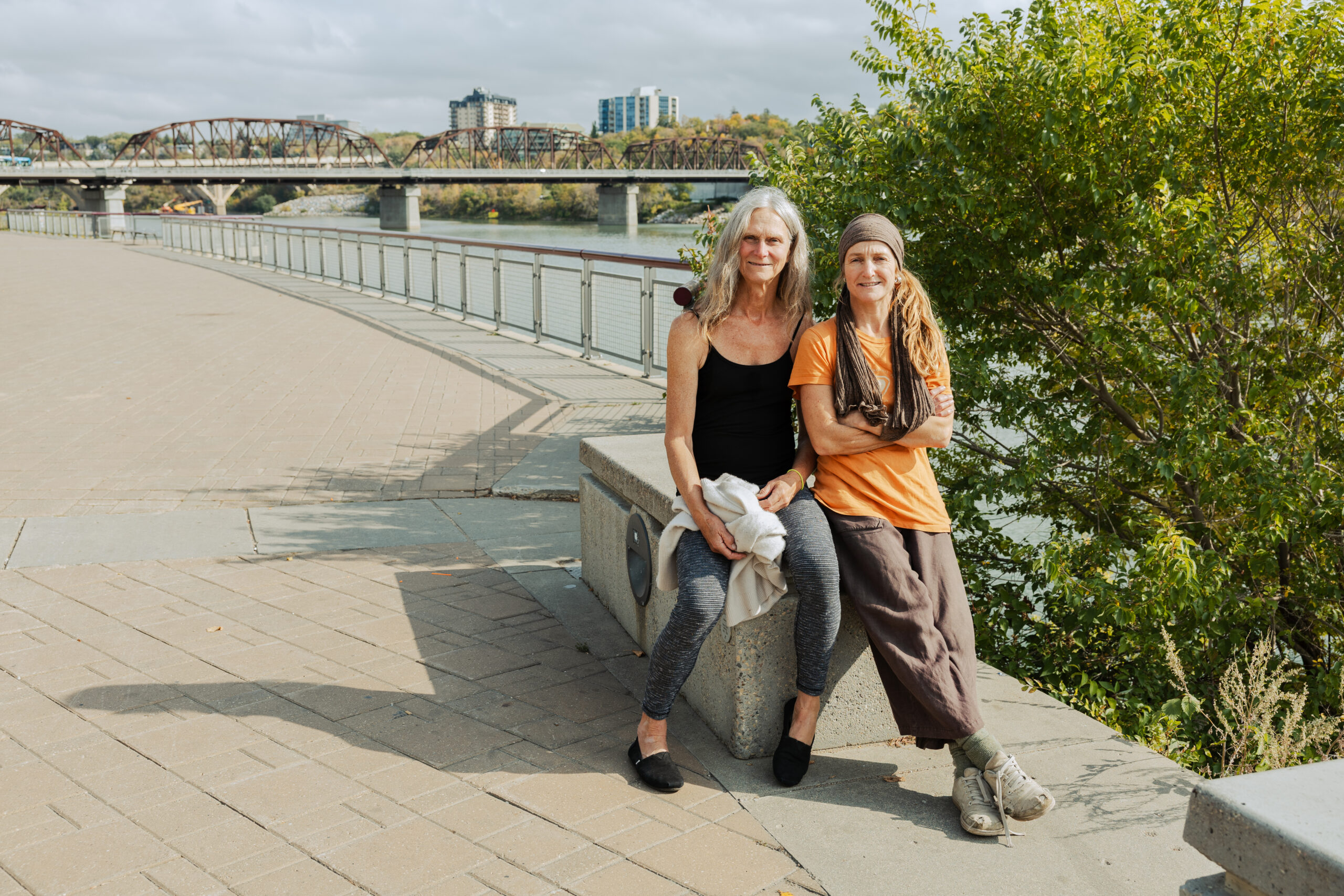Meet KSAMB Dance Company, a Saskatoon-based collaborative practice led by Kyle Syverson and Miki Mappin whose work merges contact improvisation, social inquiry, and deep attentiveness to place.
Since forming in 2009, the duo has built a body of work grounded in physical dialogue; between bodies, between people, and between art and environment. Now, as participants in Remai Modern’s Sustained Artist Mentorship Program, Syverson and Mappin continue to explore how movement can foster awareness, empathy, and connection.
A Practice Rooted in Presence
KSAMB’s foundation lies in contact improvisation, a form that emphasizes momentum, gravity, and mutual responsiveness. For Syverson and Mappin, it’s both an art form and a way of thinking.
“Contact improvisation explores the physics of touch—the physics of communication,” Syverson explains. “Playing with gravity and momentum and weight.”
“It forces one to live very much in the present,” Mappin adds, “and to be in deep communication with both physics and your partner.”

Beyond the Stage
While their practice often unfolds through performance, KSAMB’s work regularly extends beyond traditional dance spaces. They’ve performed in galleries, on staircases, in shopping malls, and outdoors. The changing contexts transform how audiences encounter dance.
“We hope that people will be surprised—perhaps perplexed—and that they might not even know that we are performing dance right away,” Mappin says. “We’re really interested in the way the performance of some scores excites the imagination and brings a reaction from people who often don’t know we’re performing at first.”
At Remai Modern, KSAMB will continue this exploration, engaging with the museum as both a site of performance and reflection. This space is particularly resonant to their art, as the South Saskatchewan River holds a special place in their daily lives, and in their practice.
“We spend a lot of time by the river. It’s like our outdoor office,” Mappin explains. “It’s pretty special to be [at Remai Modern] inside, looking out, and outside looking in.”


Art as Resistance and Recovery
For Syverson and Mappin, the body is more than an instrument. It’s a site of social meaning and transformation. Their creative partnership is informed by their daily lives together in Saskatoon’s Pleasant Hill neighbourhood and by an awareness of broader social and economic systems that shape movement and possibility.
“We share a house in one of Saskatoon’s most challenged neighbourhoods,” Mappin says. “The evidence that surrounds us every day. The effects of runaway capitalism on the people of our city, and particularly the Indigenous people, really led us to think very deeply about the role of art in all of this.”
Through their performances and teaching, they aim to restore movement as a natural human language. One that resists commodification.
“By moving, by engaging with movement, we can help recuperate some of what’s been lost or repressed,” Mappin says. “Movement, unlike the written or spoken word, is more suggestive. It’s more poetic.”

The All Bodies Movement Program
Accessibility and inclusion are central to KSAMB’s ethos. Over the past three years, the duo has developed the All Bodies Movement Program, which brings dancers of diverse physical abilities together through improvisation.
“We’ve been working to make dance more accessible as part of our program against elitism,” Mappin says. “We work with people who are not necessarily dancers in our performances.”
“It’s really suitable to bringing out the best of everybody’s abilities and integrating that into performance.”
Syverson notes that participants in the All Bodies Movement Program will also collaborate with KSAMB during their time at Remai Modern, creating opportunities for audiences to see inclusive movement practices firsthand. “We’re excited about that, and I think our people will be very happy about that.”

Looking Ahead
As their time in the mentorship program at Remai Modern unfolds, Syverson and Mappin plan to continue deepening their investigation into how bodies move through, and respond to, the world around them. Their focus remains on the living conversation between body, space, and community.
“We’re curious about the frame of a gallery… Maybe it’s more installation. Maybe it’s more intervention. Maybe proximity with people,” says Syverson.
Whatever they decide, both Syverson and Mappin understand dance is not simply a discipline. It’s a way of being together. It’s an act of presence, attention, and renewal.
Visit remaimodern.org and Remai’s Modern’s social media channels for opportunities to engage with KSAMB’s work.
About the Sustained Artist Mentorship Program
Remai Modern’s Sustained Artist Mentorship Program at Remai Modern provides emerging and mid-career artists with access to facilities, curators, and community resources. Each participant receives individualized feedback and opportunities to showcase or further develop their work. The ultimate goal is to nurture Saskatchewan’s vibrant creative community, supporting artists and forms of practice that resonate locally and beyond.

